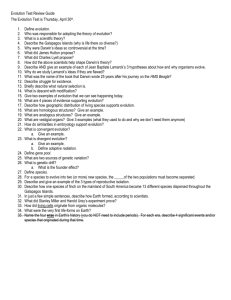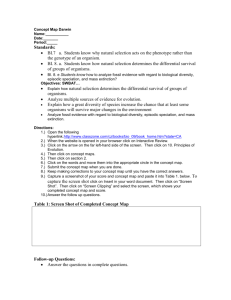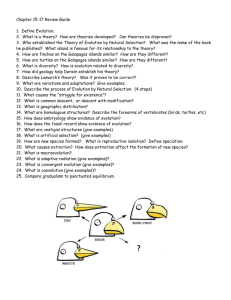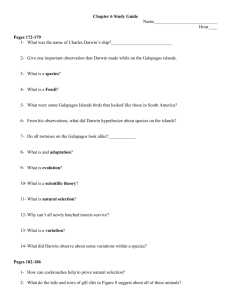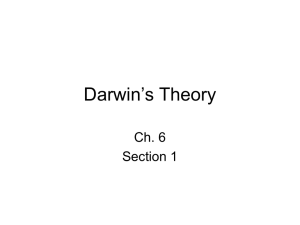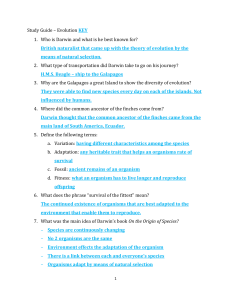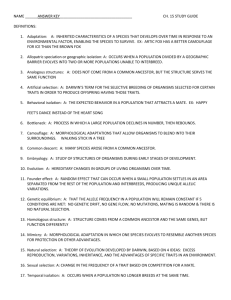3U 2.1 Early Ideas About Evolution
advertisement
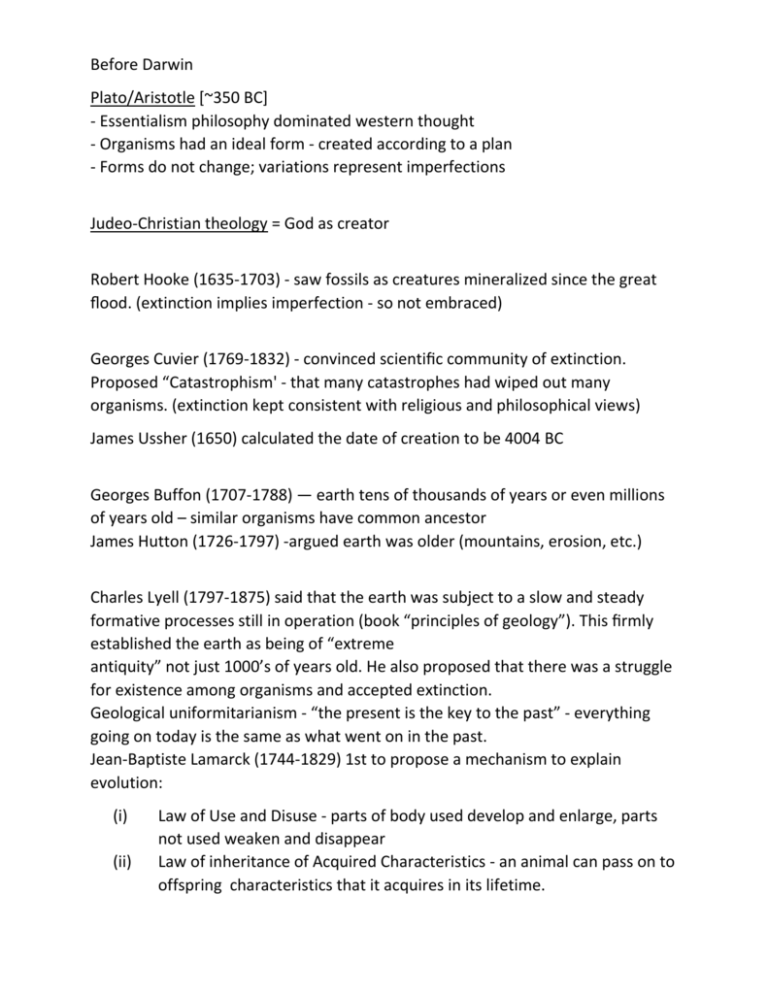
Before Darwin Plato/Aristotle [~350 BC] - Essentialism philosophy dominated western thought - Organisms had an ideal form - created according to a plan - Forms do not change; variations represent imperfections Judeo-Christian theology = God as creator Robert Hooke (1635-1703) - saw fossils as creatures mineralized since the great flood. (extinction implies imperfection - so not embraced) Georges Cuvier (1769-1832) - convinced scientific community of extinction. Proposed “Catastrophism' - that many catastrophes had wiped out many organisms. (extinction kept consistent with religious and philosophical views) James Ussher (1650) calculated the date of creation to be 4004 BC Georges Buffon (1707-1788) — earth tens of thousands of years or even millions of years old – similar organisms have common ancestor James Hutton (1726-1797) -argued earth was older (mountains, erosion, etc.) Charles Lyell (1797-1875) said that the earth was subject to a slow and steady formative processes still in operation (book “principles of geology”). This firmly established the earth as being of “extreme antiquity” not just 1000’s of years old. He also proposed that there was a struggle for existence among organisms and accepted extinction. Geological uniformitarianism - “the present is the key to the past” - everything going on today is the same as what went on in the past. Jean-Baptiste Lamarck (1744-1829) 1st to propose a mechanism to explain evolution: (i) (ii) Law of Use and Disuse - parts of body used develop and enlarge, parts not used weaken and disappear Law of inheritance of Acquired Characteristics - an animal can pass on to offspring characteristics that it acquires in its lifetime. Darwin and the Beagle voyage 1831 - 5 year circumnavigation of the globe (South America, the Galapagos islands [off Ecuador], Australia, Southern tip of Africa). As ship’s naturalist he observed geology, botany and zoology. witnessed a severe earthquake (seashore got lifted several meters out of sea) developed his own theory about how coral reefs form in Argentina he dug up extinct animals similar to but different from living species like the glyptodon [like a giant armadillo] Galapagos islands are new [volcanic] about 800 km off coast of SA and 5060 miles apart. Many species of finches [endemic to the islands] giant tortoises - species unique [endemic] to each island [endemic species similar to those on main land, but different] only 1 species of land mammals or frogs or amphibians - no creatures that couldn't fly, swim or be carried on driftwood. Therefore not placed there (God) but arrived. Thomas Malthus (1766-1834) wrote an essay on the principles of populations populations tend to increase geometrically while the food supply increases arithmetically - (population) geometric progression: 2, 4, 16, (2x) - (food) arithmetic progression: 2, 6, 10, 14 [n+4] noted that populations remain constant - so nature must act to limit pop growth — “struggle in nature”. Darwin Back Home – brought to support Creationism Darwin consulted with breeders of domestic animals to see how selective breeding worked. He himself raised pigeons. He studied barnacles for years and was published on that topic. In 1844 Darwin wrote an essay of 200 pages outlining his ideas but didn’t publish it.
